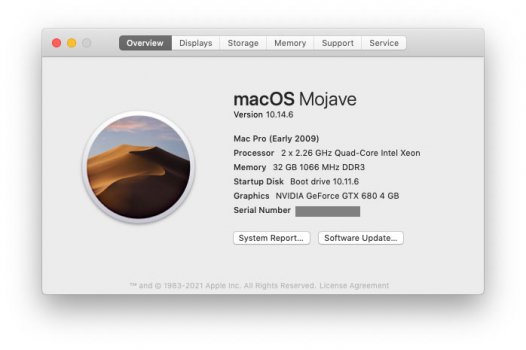I have a 2009 cMP 4,1 that was successfully flashed to 5,1 about a year ago. The machine was stable for about a year running El Capitan, then the CPUs shorted and the power supply failed a few months ago. So I put the original CPUs back in.
El Capitan worked fine except Safari performance was still really bad on certain websites, and I was curious to see if there would be general performance improvements with an upgraded OS. Mojave was my limit because I'm using Adobe Creative Suite 6 and there are reported CS6 issues beyond Mojave. I was able to update OS by disabling SIP and using the standard downloads from the Apple support page, updating each OS in sequence. I didn't use a bootable USB drive to upgrade.
However, in Mojave I have other software and plug-in conflicts, audio is horribly noisy in Mojave with the original 4,1 CPUs, and I've already had crashes in the first two days. So I want to go back to El Capitan if possible.
My question is can I revert back to El Capitan the same way I upgraded, step by step, without using a USB boot drive? I don't have a 16GB USB drive, as the instructions require. Could I use Recovery mode or just disable SIP again and re-install the OS sequence in reverse, using the standard Apple installers? Can I go backwards the same way I went forward: Mojave to High Sierra to Sierra to El Capitan? I backed up using Time Machine before I started the OS updates, and at every new OS I backed up again. So I should be able to install the files on my hard drive in the original format. (I assume Time Machine will not update an OS).
I'm kind of a noob. I need this Mac to be stable, more than I need it to be fast. Trying to research this, some of the info doesn't seem to apply to cMP. If the USB boot drive wasn't needed to upgrade, would i still need it to downgrade? Thanks.
Attachments
Last edited:


